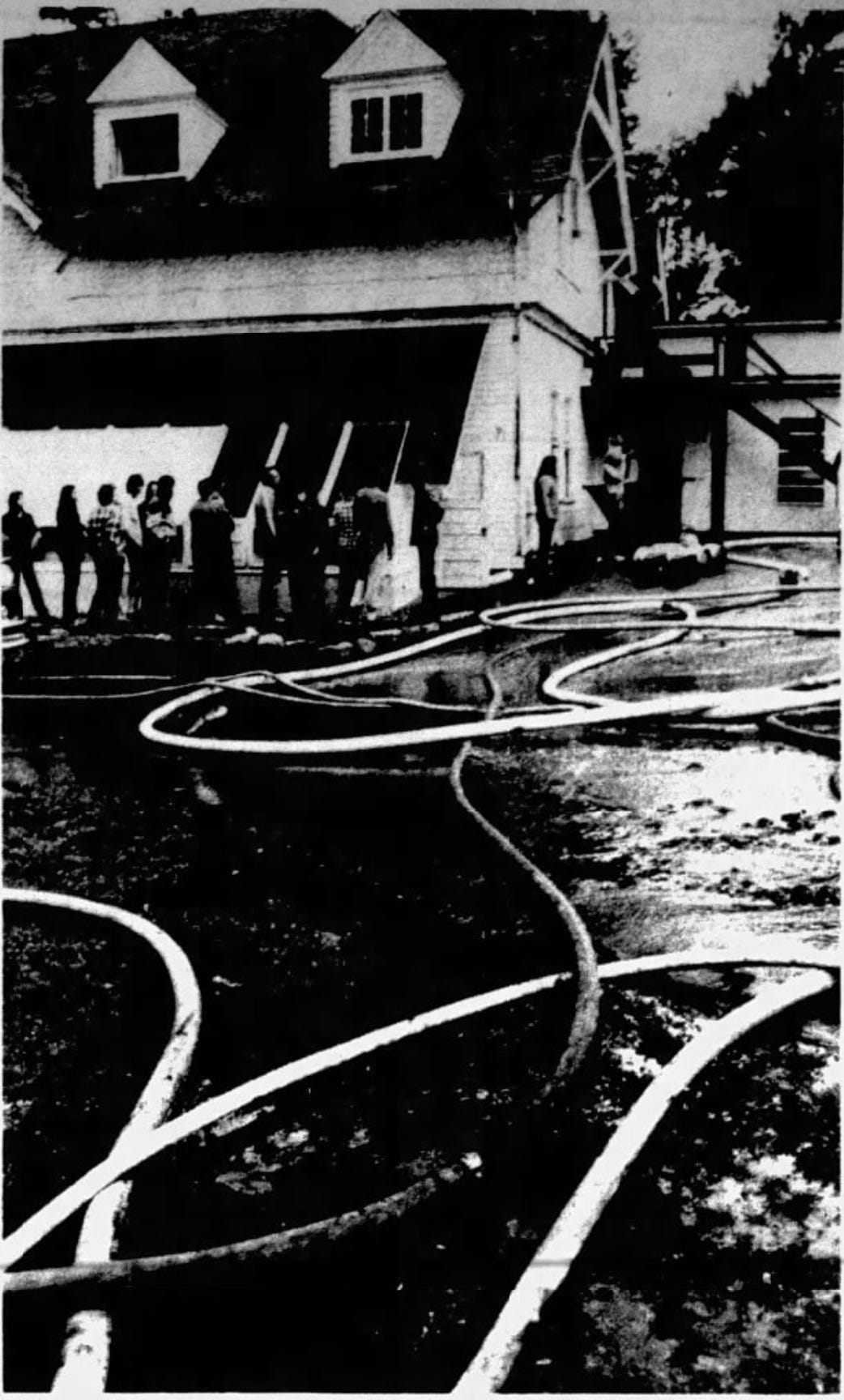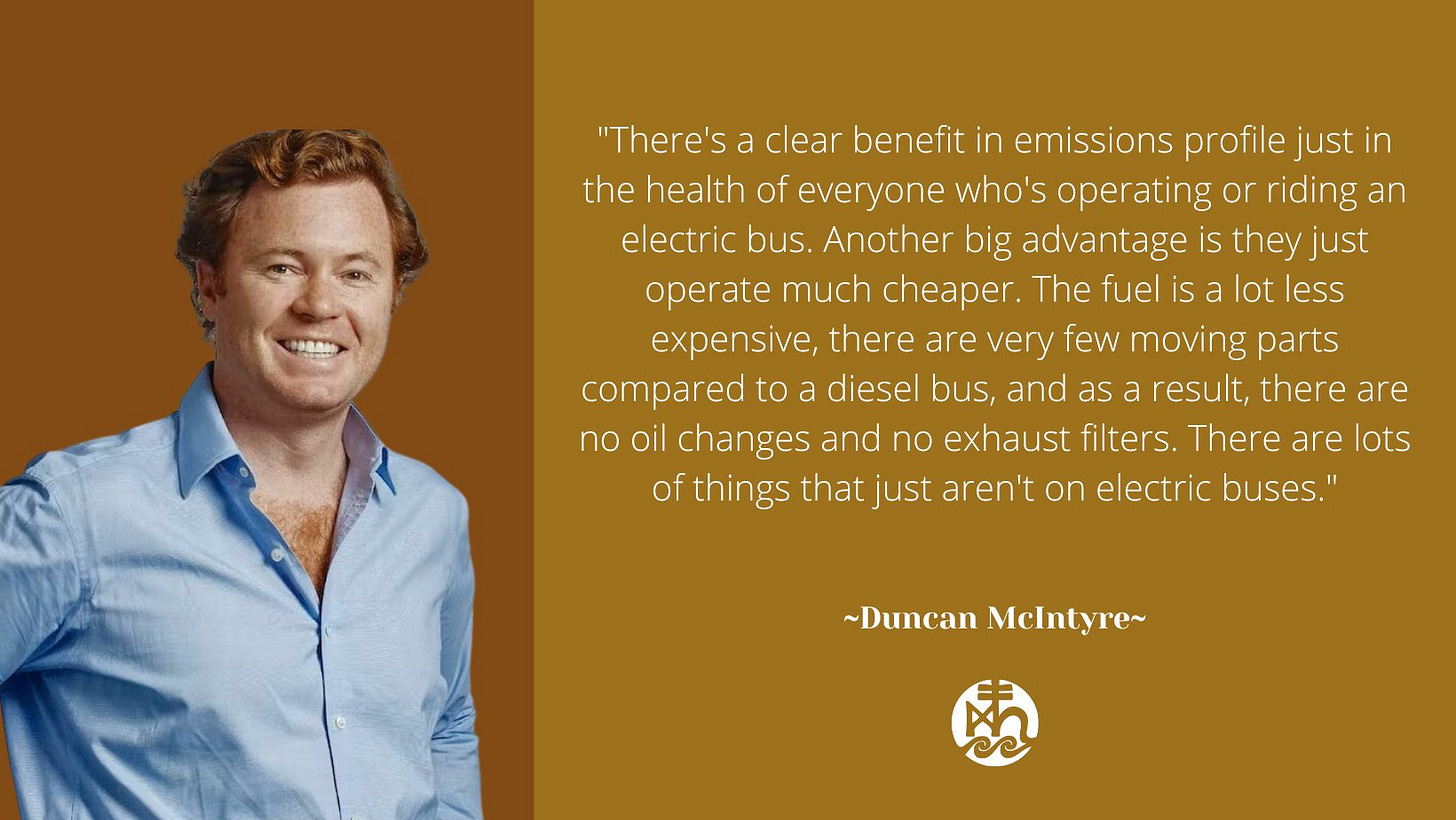Fleets of Electric School Busses? Thanks to him, it's happening
40th Anniversary of COA’s devastating fire, LUMINARIA EVENING details
BAR HARBOR—In 1983, forty years ago, on July 25, at 4:41 in the morning, the College of the Atlantic’s main building, Kaelber Hall, burned to the ground.
Lobsterman Dennis Kelley saw the flames and smoke from the town pier. He called the alarm. Former Fire Chief Royal “Butch” Higgins and a crew of 60 firefighters (Ellsworth, Acadia National Park, and Mount Desert responded) and six trucks fought the blaze in the 102-year-old building that had been the college’s headquarters. According to an Ellsworth American article by Rebecca Buyers, the lack of water pressure early on impacted fighting the blaze. That situation was later remedied when extra mains were turned on by the Bar Harbor Water Company. One firefighter, Joel Linscott, was injured when broken window glass severed a tendon in his hand. The town also lost 300 feet of hose when “firefighters had to flee suddenly because of flames.”
Planning Board Chair Millard Dority was the director of building and grounds at the time and while watching the blaze was quoted as saying, “It hurts so much.”
According to a Bangor Daily News article by Mike Gordon, who ran the Ellsworth bureau, flames were 30 feet high, and Chief Higgins, “said the fire started in the downstairs alcove of the three-story administration building.”
The building had been insured by Fred C. Lyman for somewhere between $400,000 and $500,000. The community quickly began fundraising for rebuilding the college, but the school also lost about 17,000 books from the Thorndike Library collection. It lost pots. It lost pans. It lost office equipment and financial records. It lost a computer room, a lobby, a darkroom, a dining hall.
It did not, however, lose its ability to survive.
The school began in 1972, organized mostly by Father James Gower and Leslie Brewer. Despite the fire, it continued on. In 1983, despite the July 25 fire, it kept up its summer programs. It created a rebuilding fund. And then President Judith Swazey compared the college and its community to a phoenix rising up from its own ashes.
By September, 125 students were starting a new school year and faculty member William Carpenter told students. “In Eastern mythology, creation and destruction are the faces of the same goddess. We have seen destruction in its purest form, a building destroyed by fire. But this is an institution of learning, and our job now is to learn from this as from all our experiences.”
According to another Bangor Daily News article, Swazey said, “It is nothing short of a miracle that we are all assembled here today.”
ELECTRIFYING SCHOOL BUSSES
On that 40th anniversary of the fire, the college hosted a “Coffee and Conversation” discussion between CEO Duncan McIntyre and College of the Atlantic (COA) trustee Roland Reynolds to discuss the future of vehicle electrification and how he believes that electric school buses are key to addressing climate change and ensuring healthy kids and communities. Reynolds said he was looking forward to being part of the COA community and shepherding it toward the future.
McIntyre is a serial entrepreneur, father of three, and the CEO of Highland Electric Transportation, which is a comprehensive turnkey solutions provider that delivers electric school buses. He is also a summer resident of Cranberry Isle.
According to the COA Magazine, Reynolds is “a senior managing director at Industry Ventures, where he has spent the past 13 years helping build their venture capital platform. Today, the organization has over $5 billion in assets, which they invest on behalf of pension funds, endowments, foundations, and families.”
The event was the first time he’d encountered COA.
“From the moment I drove up, I decided I loved everything about it,” McIntyre said.
McIntyre said his entrepreneurship evolved over time. “I’ve always really liked business model innovation,” he said. There’s a time when innovation is approved in the lab and in small settings “out in the wild.” And those innovations often need help getting out to the bigger world. That’s what he loves, creating business models for innovations.
This is also true about electrifying fleets as well as just getting electric vehicles out into the public.
As an example, he said that back in 2017, Elon Musk had proven to the world that you could build battery powered cars that people wanted to drive.
“As controversial as he may be, I attribute him with creating the earliest commercial traction in the EV space,” McIntyre said.
Changes in transportation typically happen at the community level.
“Transportation is local,” McIntyre said. The shift toward electric vehicles is often championed by grassroots coalitions and small-town mayors. Some of the best advocates have been people who are adamant about the potentials for electrification, he said.
Advocates, however, don’t usually have the ability to pull the purse strings to electrify a town’s fleet of school busses or police cars or public works vehicles.
“Diesel tailpipes are the greatest cause of pediatric asthma in big cities,” McIntyre said, stressing that when you tackle climate change through the story of local health, making transportation systems more reliable and cheaper, people tend to be more likely to make that switch rather than when you just say that those same vehicles help fight climate change.
“There are tons of local activists who really believe in this mission,” McIntyre said. “If you’ve ever stood next to a big diesel bus you know what it smells like.” Communities who sign onto the electrification of their school busses or other fleets view it as a local upgrade from a local health standpoint, he said. “Young lungs develop better with cleaner air. They are more adversely affected than adult lungs.”
“We see our mission as providing clean and affordable transportation to all,” McIntyre said. His company currently focuses on cities, initially on the school bus market. It’s in 17 states and the largest operator of electric school busses in North America.
The recent Biden-era infrastructure bill and tax credits have created tailwinds for the organization, which was created in the Trump era.
“We stitch together all the services needed to run an electric fleet efficiently,” he said of Highlands’ role. They capitalize the fleet and they rent the entire fleet to the municipality.
Busses currently cost about three times the amount of their diesel counterparts. Batteries last 20-40 years. A Type C bus travels about 100-120 miles on one charge. According to Highland, “Electric school buses have 97% fewer moving parts than a diesel bus. Fewer moving parts mean electric buses require less maintenance – typical maintenance savings with an electric bus are 30-50%.”
Though Mount Desert Island High School has one electric bus, Highland is not working currently on MDI, but is in Portland.
“We’d be eager to build a bigger presence in Maine over time,” McIntyre said, but their focus is on bigger states with bigger fleets in the early days of the market. “As the market matures, we’re seeing more and more interest in Maine.”
“Most cities can charge one as a pilot without our expertise,” he said, but when converting it into a fleet, it becomes a bigger, more complex issues. It requires more power, high voltage training, planning, and expertise. “We could help Bar Harbor down the road if they were interested,” he said.
THE ELECTRIFICATION OF THE AMERICAN FLEET
In 2021 President Biden said that he planned to electrifying the federal government’s cars. Today, an AP news article by Tom Krishner reports,
“Seven major automakers say they’re joining forces to build a North American electric vehicle charging network that would rival Tesla’s and nearly double the number of fast-charging plugs in the U.S. and Canada.
“General Motors, BMW, Honda, Hyundai, Kia, Mercedes and Stellantis said Wednesday that they will share in a multibillion-dollar investment to build “high power” charging stations with 30,000 plugs in urban areas and along travel corridors.
“The dramatic move is intended to speed the adoption of electric vehicles, allaying fears that chargers won’t be available for long distance travel.”
While Bar Harbor is not an urban area, the town itself and other organizations throughout the island are trying to install more public chargers in public spaces.
Tesla currently has 22,000 plugs and 2,050 stations according to the Department of Energy. There are approximately 8,700 fast-charging stations in Canada and the U.S. and 36,000 charging plugs.
Estimates of the percentage of electric cars in the United States fluctuate between 1% and 1.6% of cars.
Electric cars have existed for 120 years, but the mass production of the combustion engine automobile with cheap fuel kept the battery-run car from getting off the ground. In the 1970s, there was a fuel embargo and lines at gas station and governments said that they had to diversify. More intense research and development began.
“Enter Elon Musk, 15-20 years later, and in his typical bad boy fashion he said, ‘Until today, all electric vehicles sucked,’” McIntyre said.
According to Statistica,
“The electric vehicle (EV) market in the United States broke records in 2022, estimated at just under 918,500 light electric vehicle sales. This was over two and a half times more than in 2018—the year which marked the beginning of a strong demand for Tesla's Model 3. The sedan is one of the best-selling electric vehicles on the U.S. market.”
The site also says that competitors are beginning to make a dent in Tesla’s market domination.
Statista goes on to say,
“Increasing retail gasoline prices could contribute to consumer interest in EVs. However, the market still faces various challenges which can act as disincentives for prospective car buyers. In an October 2022 survey, U.S. respondents highlighted EVs' cost, driving range, and the time necessary to charge their batteries as the leading concerns regarding battery-electric vehicles. According to an October 2022 survey, 47 percent of U.S. participants expected an EV to have a driving range of 400 miles or above, including 19 percent expecting an EV to have a driving range of 600 miles or more. As of April 2023, the 2022 Lucid Air Dream Edition Range was the EV model with the longest range on the market at 520 miles. Tesla's 2021 Model 3 with all-wheel drive, second in this ranking, had a driving range of around 353 miles, fitting or exceeding the expectations of 53 percent of U.S. consumers.
“However, while consumers' range anxiety might not match market reality, price inflation has been heavily impacting the automotive market due in part to market uncertainties linked with the semiconductor shortage and rising raw material prices. While electric vehicles were not as affected by this uncertainty, their price point was still prohibitive for many consumers. In December 2022, the average selling price for electric cars was the third highest across all vehicle types. It remained relatively stable compared to December 2021—down 397 U.S. dollars to nearly 61,500 U.S. dollars.”
The town’s Task Force on the Climate Emergency has a mission of making the town carbon neutral by 2030. Electrifying the town vehicles and adding EV charging stations has been part of its mission as well as former Sustainability Coordinator Laura Berry’s.
Opponents of the conversion worry that it keeps the American focus on a car-centered transportation system, the mining of minerals to support the systems and supply chain issues, especially with China, infrastructure needs, and people’s willingness to convert to electric.
COA MISSION
Currently, the college has 350 students, 35 faculty members, and 70 staff members. Its mission?
“College of the Atlantic was founded in 1969 based on a unique idea: human ecology. A human-ecological perspective explores the relationships between humans and our environments, and stems from the premise that the world’s most pressing problems require solutions that cross the boundaries of academic disciplines and seek fresh combinations of ideas. Our approach is interdisciplinary and experiential, and encourages students not just to investigate complex issues, but also to work collaboratively for positive change.”
THE 22nd ANNUAL CAROL DYER MEMORIAL LUMINARIA EVENING ON SATURDAY, AUGUST 12
The 22nd Annual Carol Dyer Memorial Luminaria Evening will take place on the Bar Harbor Village Green Saturday, August 12, from 7 - 9:30 pm. A rain date is set for Saturday, August 19.
The Luminaria Evening is a ceremony of hope and remembrance to honor cancer survivors and those who lost their battle with cancer. The annual event was started by friends of Carol Dyer, the beloved children’s librarian for the Jesup Memorial Library who died of a brain tumor in 2001.
The evening is sponsored by the YWCA Mount Desert Island. Luminaria bags may be purchased in advance on-line at https://bit.ly/46n73t4 or by calling 207-288-5008. Bags will be available for purchase at the event and the suggested donation is $10 each. This year’s proceeds will benefit The Breast Health Center at MDI Hospital.
Luminarias are paper bags with names written on them and with a lighted candle inside. Each one represents a life and the hope for a cancer-free world. Luminaria typically have “In Memory of [Name]” or “In Honor of [Name]” written on them. Many participants decorate them using markers, photos, or other memorabilia to make them unique. Some people cut stars, circles, or other shapes out of the bag to enhance their glow when lit.
On August 12th, hundreds of luminarias will encircle the Bar Harbor village green. Each name and hometown will be read by individuals during the lighting ceremony. Master of Ceremonies for the event will be WDEA’s Chris Popper, with readings throughout the evening and live music provided by Alice French.
Archival Ellsworth American photos by Reid Albee.
LINKS TO LEARN MORE
Connect with Duncan McIntyre:
OTHER LINKS
https://alejandrocremades.com/duncan-mcintyre/
https://www.facebook.com/watch/live/?ref=watch_permalink&v=661856535999094
https://chargefinder.com/us/bar-harbor/charging-station/dgxr36













